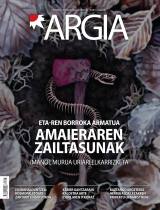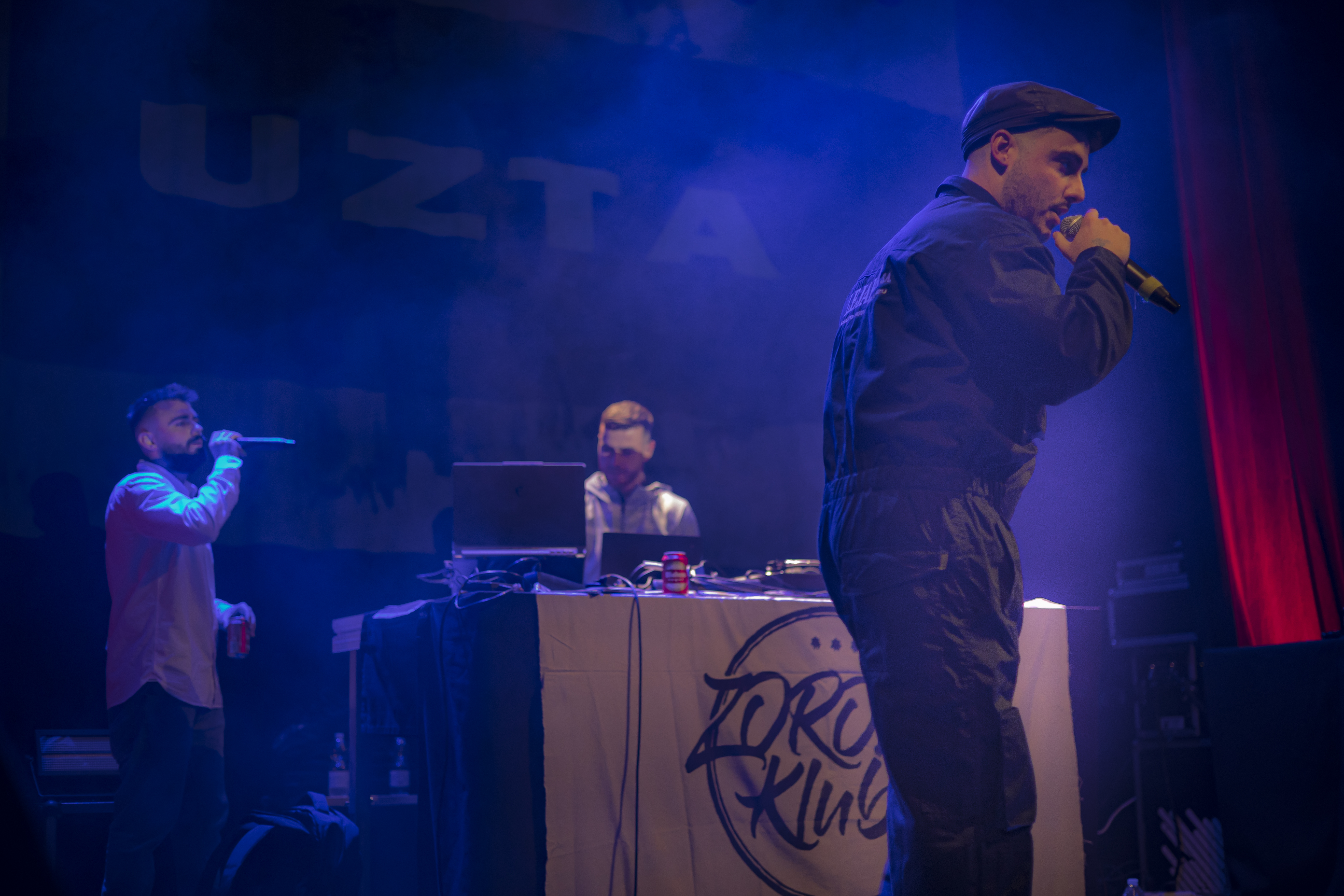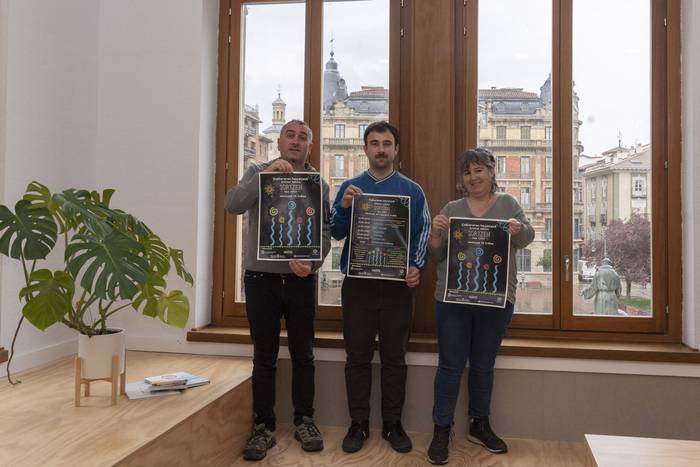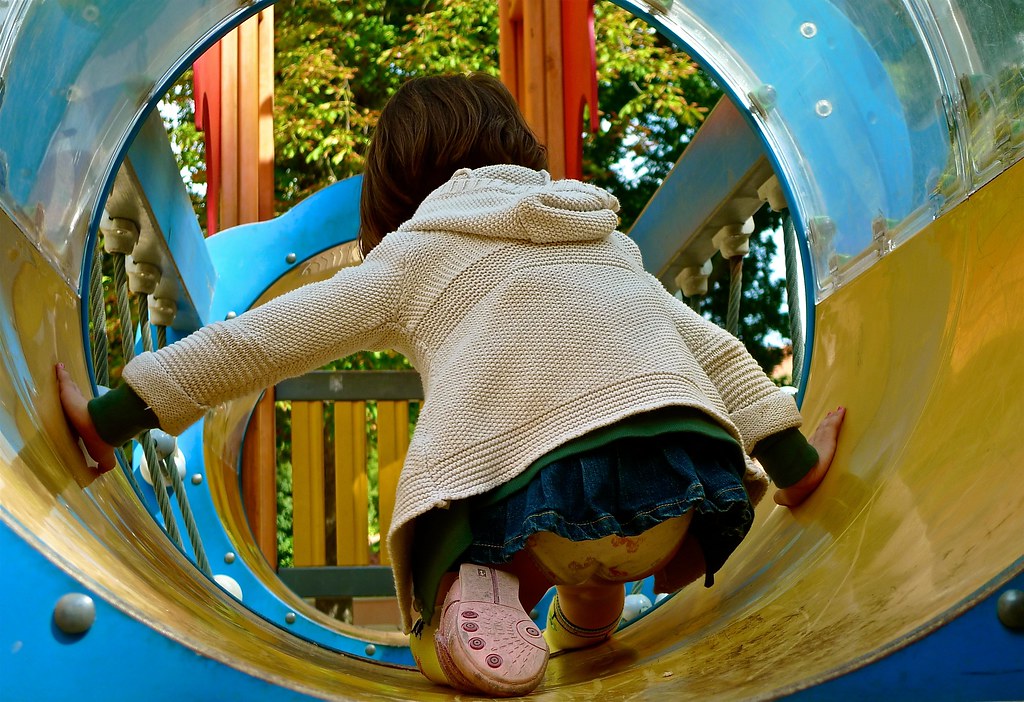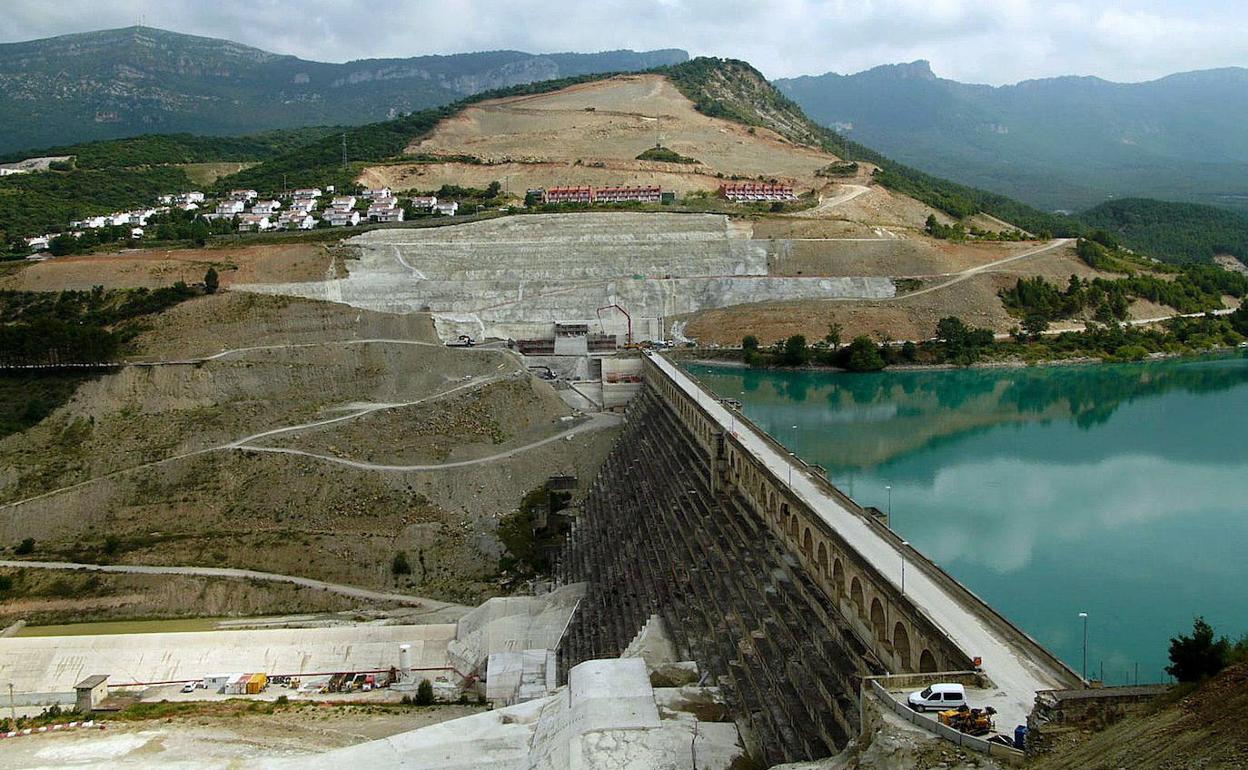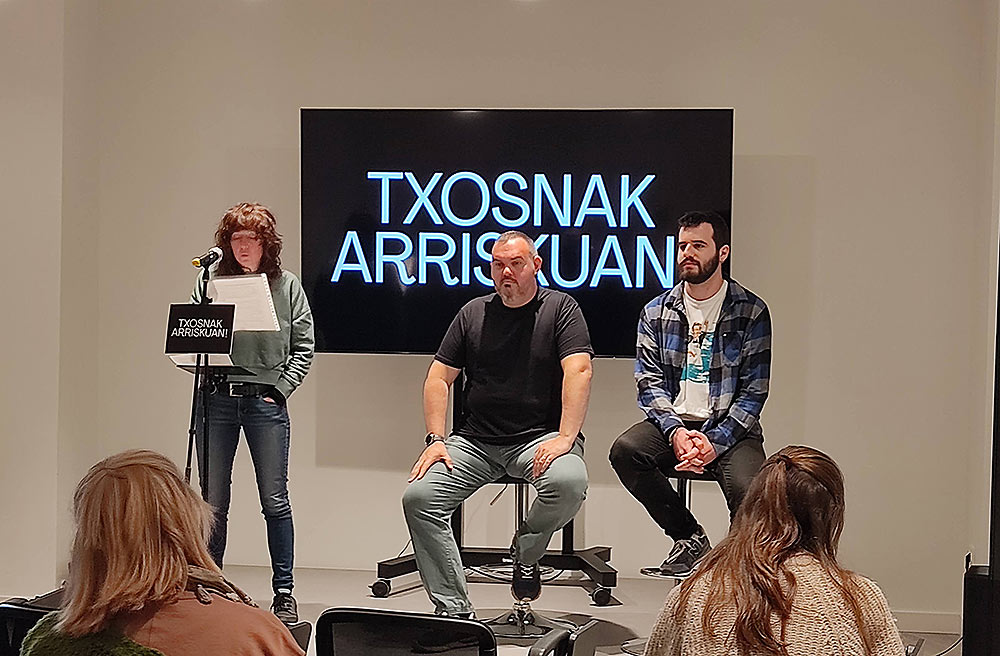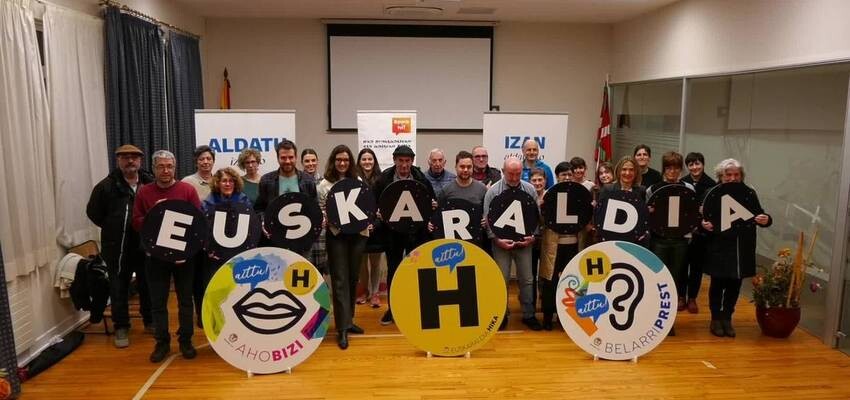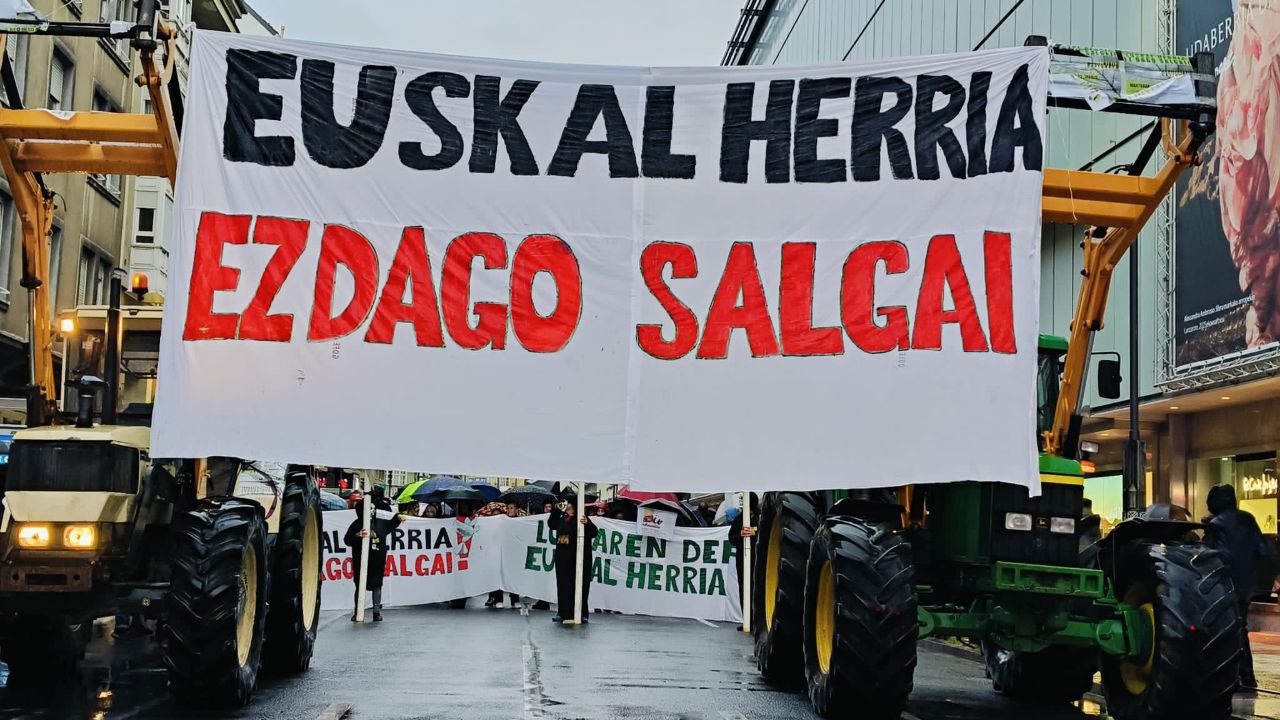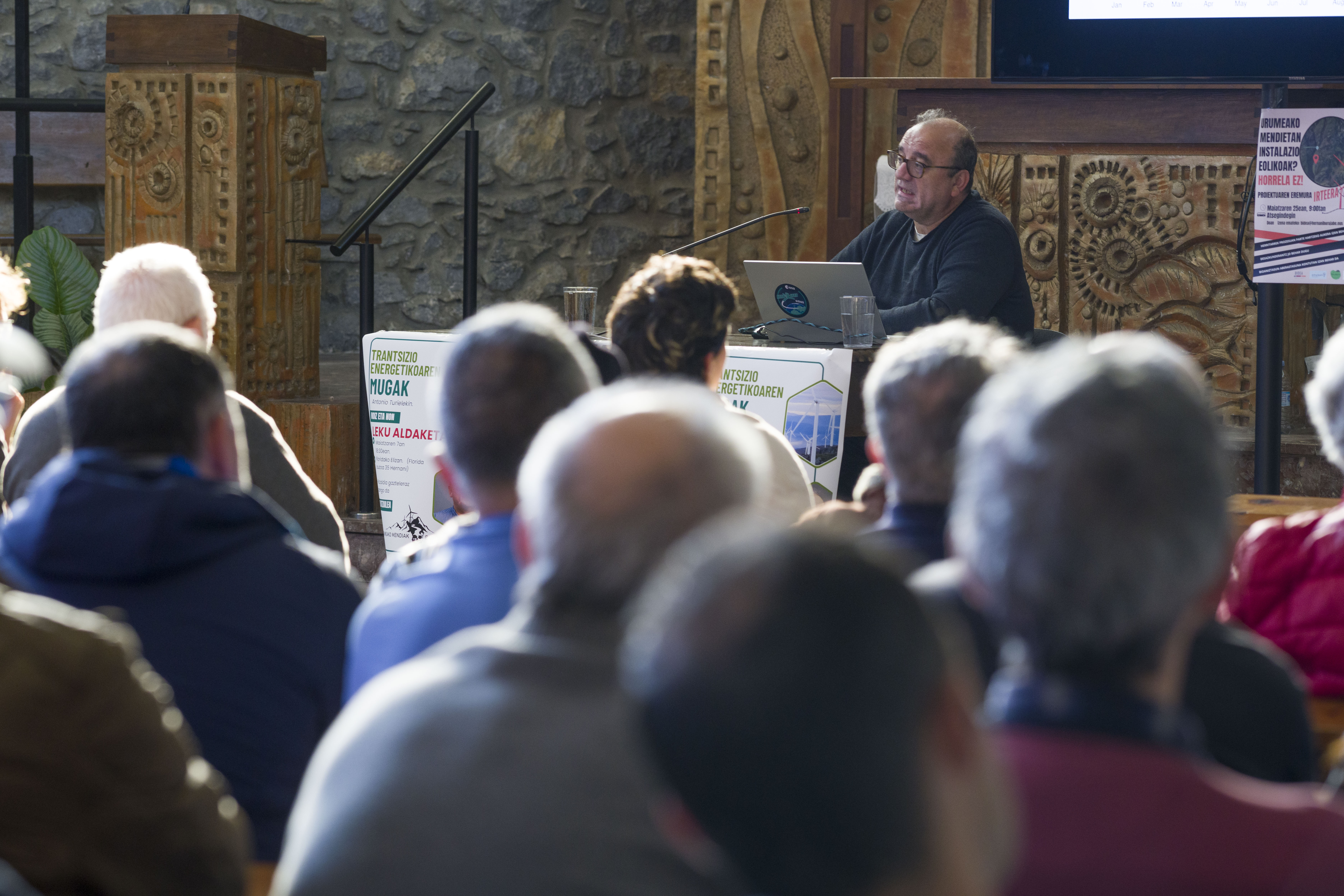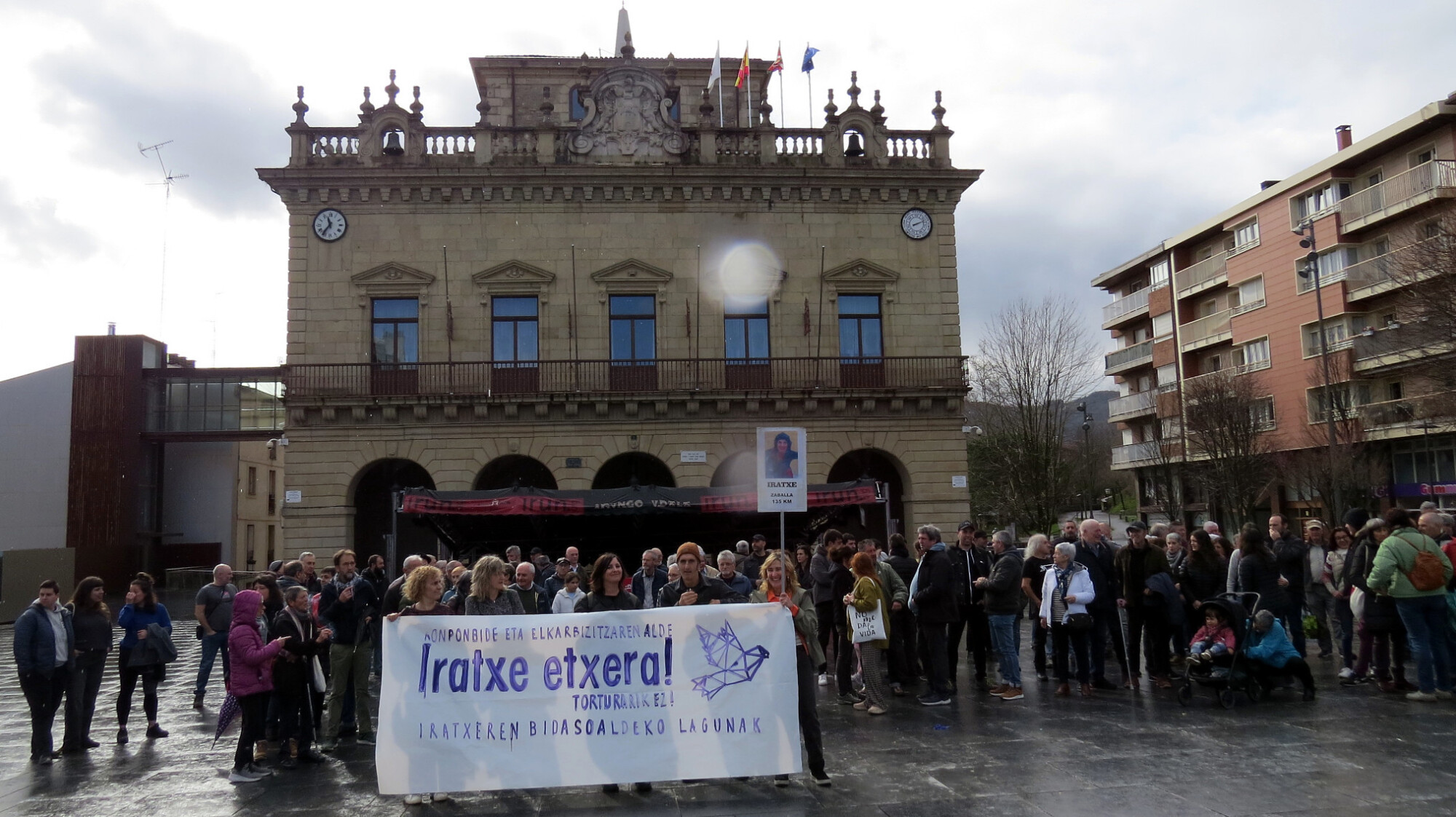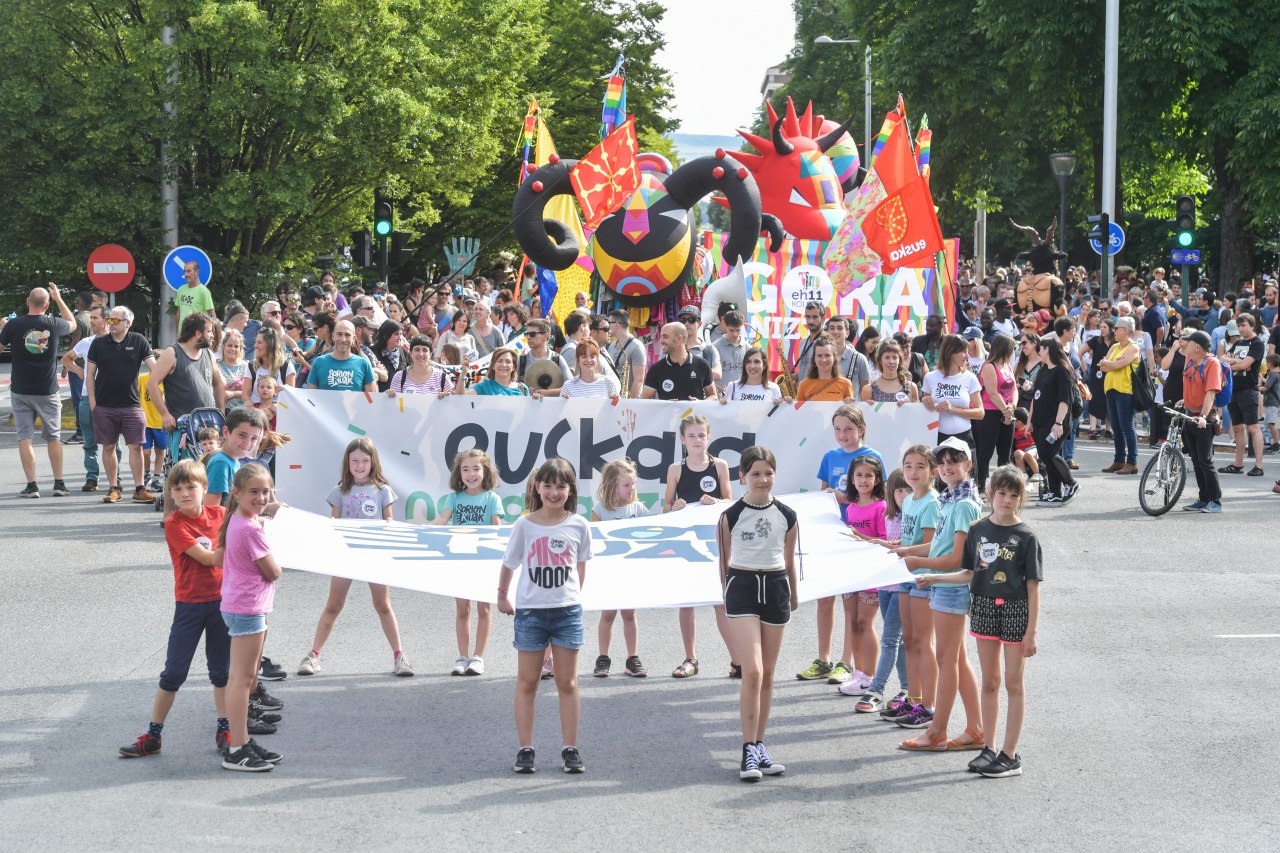Uncovered the Republican scratch
- Despite the fact that civil war battles are well known in Intxorta or Bizkargi, what do we really know? You can hear it by the mouths of the oldest or read something in the military's calendars. However, it is difficult to explain in words the cold and heat that has been proven on the front. In recent years, popular and archaeological initiatives are recovering these frontline scenarios to understand what they lived on the skin of those gudaris.
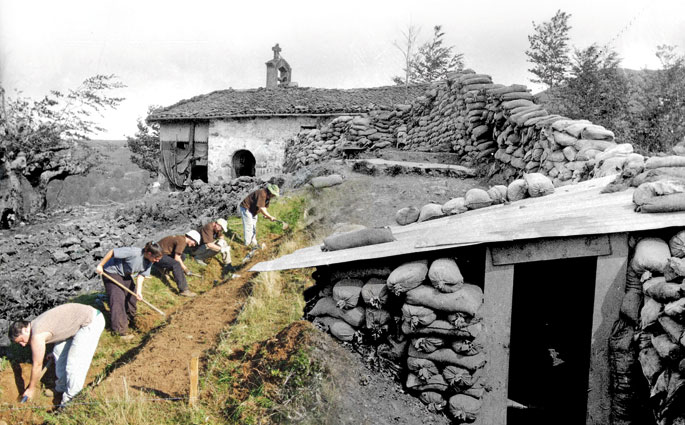
We continue to dehumanize the remains of the shot 80 years after the beginning of the war. The latter, of 14 Ezkaba fleeing prisoners, killed and buried by the Francoists next to the Olabe cemetery. In Euskal Herria, the last decade has been the priority to investigate the atrocities committed in the rear and to restore dignity to these people condemned to oblivion.
But if you recover the historical memory of what has happened, it is a task that needs to be done together. “The historical memory is not only the exhumation of cadavers, but also the recovery of testimonies and civil war spaces,” said Javi Buces, of the Society of Sciences Aranzadi, in 2013, about to begin excavations in the trenches of Mount Belkoain of Aduna.
Until in July 1936 he rose up and on June 19, 1937 the requetés of the fifth brigade of Navarre placed the bell pepper in the City Hall of Bilbao, only 11 months passed. During this time, the mountain lines of Gipuzkoa and Bizkaia were filled with trenches forming a more complex network than has been believed so far. Thanks to this defensive system, lehendakari Agirre created the government and faced the fascist attack:
...some were walking backwards from one side to
the other, and many thoughts
could not take the stick
of the wall ... /
The verses written from Kalamua illustrate the hardness of their struggles. But you can imagine even better looking closely at the trenches that are kept on the hillside as snakes. They have organized exits to Kalamua and Akondia from the surrounding villages to learn about the remains of the war. In nearby Intxorta, on the other hand, the City of Elgeta, with the collaboration of the Intxorta Cultural Group 1937, opened a theme park.
Since then, the war trenches have also been recovered in other parts of the country. In Belkoain, young people from the Basque Country and outside the Basque Country have discovered a line of over 200 meters. In Lemoatx, they have also based themselves on community work to dig up the warlike remains of the mountain summit, thanks to the work carried out that could identify the bone remains of a dead militia. In the area of Berango and Sopela, the concrete shelters of the famous Iron belt built to defend Bilbao have been exposed; in Mount Kamaraka of Llodio the trenches of this belt are seen, as well as in Ugao-Miraballes and Larrabetzu. Mountain tours, races, interpretation centers… There is an increasing chance of knowing all this heritage.
It's not a simple curiosity. In order to make the most faithful account of the past, it is essential to be aware of what was experienced in the forefront during those months of war, to understand the situation in which they fought each other. The anthropologist Andrés Zarankin, who has investigated the repression of the Argentine military dictatorship, has perfectly described the objective of such excavation: “We want to create a material memory, that is, turn it into something physical, that can understand otherwise than the word. It is the memory that we can touch, smell and live.”
Archaeology plays a very important role in all of this, even if it doesn't have much tradition in such a close history. In December 2014 I. Archaeology of the Spanish Civil War A congress was held at the UPV/EHU. In this article, Alfredo González Ruibal, researcher at the CSIC, reflected: “Archaeology does the same as if we had seen for the first time something that is known to us and with it generate knowledge. To create that feeling, you have to dig well, but you also have to know how to build stories.”

Murugain: War of 1936 and Iron Age held by hand
The de Murugain could be considered as the first trench excavated in the Basque Country with a specific archaeological methodology. It was already known that on this hill, situated on the border with Álava and Gipuzkoa, there was a village of the Iron Age and remains of the civil war. Commissioned by the City Hall of Aramaio and with the collaboration of the Museum of Archaeology of Álava, the company Ondare Babes started the work in 2011 and has carried out various campaigns.
Historian and archaeologist Etor Telleria has directed these excavations: “First we go to the most visible places, as the Iron Age wall is well preserved in the area of Aramaio. We did large surveys of 20 square meters and saw that there was a depression parallel to the wall, which was the trench.”
They have differentiated the characteristics of each stratigraphic unit or layer, measured the environment through the tool the total station used in topography and created three-dimensional images with the photographic record obtained by the photogrammetry technique. With all this, it was possible to see how the cut was made on the ground and what logic followed the rows of the trenches: “We realized that the line of defense was more complex than was thought, that it also had trenches and shelters that communicated with the main line,” explains Tellería.
This type of finding upsets the convictions that the Republican front in Euskal Herria was weak and improvised: “It’s the theory I’ve heard since I started working, that the trenches were made at the last moment. I don’t know if they were hurried, but they did do it willingly: dig the rock out of the place with the piquita…”. As explained by the archaeologist, the shoemakers and engineers were needed to build these kinds of structures. In any case, the results of the excavations show that the soldiers also used the existing remains to build the trench, such as the Iron Age Wall itself of almost 3,000 years or the pumpkin used as a refuge.
The high of Murugain was strategic to prevent the golfers from entering the Alto de Debagoiena, but these trenches were not excavated in isolation, in the Jalindo and Gorbeia mountains, they are also visible. The members of the Patrimony Protection have made records throughout the region and have found that all the surroundings of Otxandio, Arrasate and Bergara are covered in trenches.
On 31 March 1937, General Mola began the offensive in Bizkaia and the surrounding area of Murugain was left to the Francoists. The newspaper chronicles are a sample of the battles that have taken place these days in the Basque newspaper “Gorbea is ours!” he said aloud: “The Moors who entered the Gorbea era were thrown.” On the contrary, La Voz de España stated without complexes that the “fire and iron” dropped in Murugain gave the summit an aspect of volcano.

How did the soldiers there suffer these situations? Telleria, what interests him most is that “microhistory”: “We know a lot about military movements, everything is documented and we know who lost and who won. What we now want to know is how those who were there lived, in this case those of the Dragons battalion.” In the excavations have been found objects that “humanize” the war: cans of condensed milk and cooked meat, buttons, soles of the feet, pieces of skin, pencils… In addition, numerous munitions have been found, already used in the First World War.
Hand grenades against military mortars in Zubietamendi
Joxe Agustin Muguruza has realized that the analysis of pods and explosive fragments is not a second-rate study. It has moved here and there for pure historical interest: In Saibigain de Urkiola, in Legutiano, in Intxorta… He says that scrap yards have been around the mountains for a long time because there are items that “pay well” in an unregulated market.
The Republican hand grenades found at the Txaldatxur de Zubietamendi would be highly appreciated in this market, but fortunately they will be exposed in trinas at the City Hall of Lasarte-Oria. Muguruza is a member of Islada Ezkutatuak, a group that works to recover the historical memory of the region. In 2013 they launched to Txaldatxur in search of the first signs and have since been located at least 120 meters of trench and special ammunition.
22 artifacts of artisanal production of explosives have been removed from a detonation centre in the city. These are plumbing tube grenades, widely used in the context of 1936 and previously known as chorizos, churros or elbows. They were probably manufactured in the nearby Brunet and Cia tissue factory. They're not oxidized empty pieces. This finding shows the mediocre means with which Republicans faced the military uprising.
Txaldatxur was on a vertex from Andatza’s front, “this front held Gipuzkoa for a long time in the hands of the Republicans,” says Muguruza. The Memory Tours report, prepared by a research group of the UPV/EHU at the request of the Basque Parliament, lists these areas in the list of “war memory” sites. There were the socialists of the Amuategi battalion, the Eusko Gaztedi, the anarchists, the commander Kandido Saseta, the Euskaltzale Koldo Mitxelena…

At the beginning of the war, people were not prepared, according to Muguruza, “that’s why the trenches of Intxorta and those here are not the same.” This difference has also been made clear by inventing the material of another trench found in the fascist camp: aerodynamic shells, new pods, numerous tuna cans… Molarena was a professional army. Constructions have also appeared that inform daily life. While working, members of Islada Ezkutatuak watched a hole through, and when they started digging, with no ammunition, they took nails in their claws instead of nails. “At first it was a flash, then we realized that they were toilets that joined the woods with these nails.”
People want to know what happened.
It is clear to the actors involved in the grass-roots initiative and in the administrations that the recovery of the trenches would not make sense if this heritage is not to be disseminated in the collective memory: “We didn’t want to have a group of archaeologists spend a month on the mountain and then close in the lab,” says Etor Telleria. The City Hall of Aramaio also proposed an open project for excavations in auzolan: “Well-coordinated can produce good results, through participation, people are made aware of the heritage of the people.”
And what makes a person enter a trench almost 80 years ago? What do you feel? In the words of Joxe Agustin Muguruza, people want to know what happened. “One thing is flags and tears, and another is seeing what happened. The soldiers were furious, and one of them said to me: “How did those repugnant win us?” That feeling has passed from generation to generation, but nobody has told us what happened and now people want to know that.”
Andrea Velasko dietista eta nutrizionistak elikaduraren bidez menopausiak eragindako aldaketak kudeatzeko zenbait gako eman ditu.
BRN + Auzoko eta Sain mendi + Odei + Monsieur le crepe eta Muxker
Zer: Uzta jaia.
Noiz: maiatzaren 2an.
Non: Bilborock aretoan.
---------------------------------------------------------
Ereindako haziek ura, argia eta denbora behar dute ernaltzeko. Naturak berezko ditu... [+]
Antonio Turiel fisikari eta CSICeko ikerlariak aspaldiko urteetan ez bezala bete zuen Hernaniko Florida auzoko San Jose Langilearen eliza asteazkenean. Zientoka lagun elkartu ziren Urumeako Mendiak Bizirik taldeak antolatuta Trantsizio energetikoaren mugak izeneko bere hitzaldia... [+]









